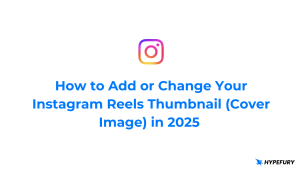Negative engagement on social media platforms such as Twitter can be seen as an inherently bad thing. After all, this very blog usually recommends that you interact with people online so that they will grow to like you and choose to follow you!
But when used strategically, negative engagement can actually benefit you and your brand!

What is negative engagement?
Negative engagement on Twitter is when users react negatively to a tweet or post – for instance, with criticism or even insults. This type of engagement has become increasingly common in recent years, especially as conversations surrounding controversial topics such as politics, social justice, and the pandemic have become more heated.
How exactly can negative engagement be helpful?
In a word, it can spice up your feed. By sparking up conversations, engaging in a little bit of negativity can make you stand out and have people interact with you.
But of course, it can also turn sour and end up being damaging to your brand’s reputation. We all know some Twitter accounts that emanate too much negativity and end up pushing us to click that Mute button (or even to unfollow).
To make sure that you can leverage the benefits of negative engagement without suffering the consequences, it’s important that you first understand the purpose of negative engagement and how it really works.
The benefits of negative engagement
Contrary to popular belief, being occasionally negative on Twitter can be good for you! Here are some of the potential benefits of this approach in more detail:
Increased reach
Your contrarian tweets or comments can be conversation starters for your followers, but also for other users. They will see the topic you’ve brought up and feel compelled to participate, spreading your message to a wider audience.
Improved brand perception
Being brave enough to be controversial and open to criticism can make you look good to your audience. After all, it’s not fun to see people always play it safe!
Increased engagement
By poking at your followers’ preconceptions or opinions, you can keep them interested in interacting with you.
Improved understanding of your audience
Whether an unexpected remark doesn’t land well or instead your audience surprisingly welcomes it, you will learn more about what your followers are into and comfortable with, which is always helpful!
Examples of negative engagement on Twitter
In our age of open debates online, negative engagement on Twitter is, unsurprisingly, becoming increasingly common. Here are a few examples of how brands have managed to leverage negative engagement:
Nick Huber (@sweatystartup) and his hot takes
Nick Huber is a startup entrepreneur who buys, raises capital for, and runs self-storage facilities across America. Online, he likes to play devil’s advocate and post tweets that intentionally rile up his user base. He doesn’t necessarily say anything that isn’t true or do anything unethical — but he loves to say things that will start political or social discussions.
How @elonmusk can make twitter very profitable, very quickly.
Charge people $1 per month for every 1,000 followers they have.
Scaling up $2 per month per follower if over 100k followers.
Want millions of eyeballs on Twitter? Want to make money here?
Pay up!
— Nick Huber (@sweatystartup) April 25, 2022
Shaan Puri (@ShaanVP) of My First Million and his Clubhouse-will-fail thread
So… everyone seems to think clubhouse is the "next big thing" – but I think it's going to fail.
Here's how I think it all goes down..
— Shaan Puri (@ShaanVP) March 16, 2021
Back in 2021, Shaan wrote a long thread that was critical of Clubhouse, then the talk of the town, in his early attempts to grow his follower count. It was a thread that was essentially shorting the Clubhouse stock, in the market of public opinion at a time when Clubhouse was very popular. Setting aside that he ended up being right with this one (the survivorship bias is not really the point!), the reason why this tweet thread did well is because it attracted the kind of negative engagement where people are not necessarily back-slapping and congratulating each other about hustle culture or ‘wins,’ but instead taking a deep stance on something from a critical or pessimistic point of view. It was much deeper and interesting than your usual uplifting content!
Steph Smith (@stephsmithio) on remote work
You can only have one. How would these rank from 1️⃣ to 6️⃣?
• 30% raise
• fully remote
• no meetings
• unlimited PTO
• access to a VA
• 4-day workweek— Steph Smith (@stephsmithio) January 14, 2023
Steph is not necessarily saying anything here that is particularly annoying or snarky. However, she is clearly gaming the algorithm to allow people to engage with some kind of negative emotional attachment to one point of view or another. This prompt can easily generate the following responses in people:
“Why would you need a VA, that’s decadent!”
“4-day workweeks are for lazy people.”
“Anyone who doesn’t just take the 30% raise is not maximizing their potential.”
Or even the opposite point of view of any of those statesments.
She’s trying to provoke a reaction in people that will push them to respond to her!
Strategies for positively leveraging controversy
As we’ve mentioned, negative engagement is not without its risks. To ensure that you’re able to leverage its benefits without damaging your reputation, it’s necessary to have a few strategies in place. Here are some tips:
Think before you post
This should be obvious, but it’s worth spelling out. Wanting to stir a bit of controversy doesn’t mean you can just post whatever rises from your subconscious! Some of your most unconventional may truly be best kept to yourself. Also make sure to think about your wording to avoid misunderstandings.
Respond quickly
Triggering a strong response in your audience needs for you to be responsive. If you let comments pile up under your controversial tweet without intervening, you run the risk of losing your grip on the situation and the narrative and seeing your attempt at more invigorating engagement spiral out of control. You need to come off as responsive and open to criticism, not just opinionated!
Be respectful
Being negative doesn’t give you carte blanche to be uncaring. Always stay respectful when responding to negative engagement so that your audience will understand that you are open to dialogue and not a bully.
Leverage Hypefury
Hypefury offers countless features to help you on your Twitter journey, by increasing your reach and helping you manage your posting. Paired with a negative engagement strategy, Hypefury could turbo-boost your growth!
Monitor mentions
Tweeting out negative ideas could get you really noticed, and it’s crucial that you stay open to people trying to interact with you directly. Keep an eye on your mentions so you can respond quickly and present yourself as open to any (respectful) response to you.
Provide solutions
It’s all very well to complain and be a contrarian, but if you ring the alarm without offering your own solution to a problem, you could come off as just a nuisance that isn’t very helpful and just brings people down. When responding to your users about your negative post, try to give them something to hold onto, even it it’s only an idea and nothing too concrete yet. That way, you’ll demonstrate that your brand is not negative for the sake of it and open to feedback.
Take it offline
If the conversation is getting too heated, don’t limit yourself to 280 characters. Go talk to the person on another, more direct platform to make sure things civil and that your brand is seen as open to dialogue and not trying to upset anyone too much.
Analyzing the impact of negative engagement
Once you’ve engaged in negative engagement, check whether it has actually helped you! Here are a few tips:
- Track engagement: Have a look at how many users have reacted to your controversial post and what kind of response they had. Were they too offended, or did they enjoy your thinking outside the box and voicing your opinion?
- Analyze comments: What kind of sentiment do your responses show? This will give you an idea of how the people now perceive you and your brand.
- Monitor mentions: Your mentions will show you how people are talking about you and your negative posts.
Lessons learned from negative engagement
Negative engagement is like a sport: it can lead to great results but takes risks, and needs you to be precise and bold at once. Also like a sport, it can teach you some things – more specifically, it can help you better understand what it means to be a person or brand online.
The key things to remember when engaging in negative posts are:
Remain authentic
Sharing a controversial idea that you can’t really defend yourself won’t make you look smart. You’ll only appear confused and like a try-hard. Have trust in your own creative thinking and personal point of view! There surely are some popular ideas that you don’t agree with and can criticize from a genuine place. This kind of confident sincerity will attract people to you.
Be open to criticism
You are online to engage, and you can’t engage if your guard is up. Stirring controversy with your original thoughts won’t lead you anywhere if you react defensively or retract in the shadows every time someone disagrees with you! Staying open is the way to have deeper, more authentic and more gratifying exchanges – online and off.
Be reasonable
Don’t start controversies left and right. If you overwhelm yourself with too much negativity, it’ll be harder for you to defend all your positions and you’ll appear too frustratingly opinionated to your followers. Moderation paired with a healthy dose of independent thinking will make you look much smarter!
You don’t have to do it alone
There are plenty of tools out there to help you navigate the stormy waters of Twitter when your controversy is raging. Check out Hypefury!
Conclusion
If you already know how to be pleasant and inviting on Twitter, negative engagement could be a way for you to spice up your presence and attract a bigger audience. You’ll have to be strategic to avoid damaging your image, but with the help of this article and tools like Hypefury, you could see your engagement go through the rough and make your Twitter experience that much more interesting!






